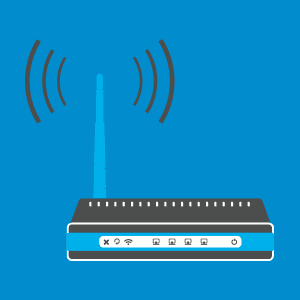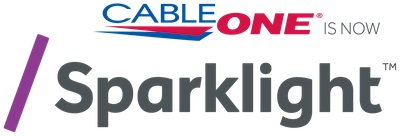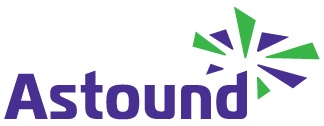HouseholdsIn Kentucky, the aggregate number of households is 2,017,738 |
Median IncomeHouseholds in the state of Kentucky have a median income of $45,601. |
PopulationThe total population in the state of Kentucky is 4,462,148 |
DSL TechnologyApproximately 86.31% of consumers in the state of Kentucky have access to DSL internet |
Fiber TechnologyApproximately 10.61% of consumers in the state of Kentucky have access to fiber-optic internet. |
Cable TechnologyApproximately 78.68% of consumers in the state of Kentucky have access to cable internet. |
Wireless TechnologyApproximately 99.26% of consumers in the state of Kentucky have access to mobile broadband internet. |
Average upload speedFor residents in the state of Kentucky, the state-wide average upload speed is 5 Mbps |
Average download speedFor residents in the state of Kentucky, the state-wide average download speed is 9 Mbps. |
Best Internet Service Providers in Kentucky


Call (858) 947-7574

Best Internet Service Providers in Kentucky

Comparing the Best Internet Service Providers in Kentucky
Are you trying to decide the best Internet connection type for your needs? You may have heard of options like DSL, cable, fiber optic, and satellite, and the sheer number of choices can be overwhelming. Which is the fastest? Which will best run Skype, video conferencing, and telephony applications? Which connection can provide me with Internet service in remote locations? Here is a short summary of the different options for Internet service in Kentucky and their advantages and disadvantages.
The state of Internet technologies has advanced dramatically in the past few years, flooding the market with different providers and competitive packages of services. Download speeds are increasing, connectivity and reliability are improving, and prices seem to be dropping every day. The bundling of services such as Internet, television, and even telephone can help customers find a comprehensive package for all their needs for a low monthly price but can add to the sense of confusion and overwhelmingness.
Thus enters MyRatePlan, providing customers with easy access to the best deals and packages for Internet service in Kentucky and elsewhere. By keeping data on various area service providers and packages, MyRatePlan can help match customers with the plan that is right for their needs. Customers can simply enter their ZIP code and find the best high-speed Internet options for their area. MyRatePlan can even help customers to find an Internet package which will work with their existing phone and television services. Customers looking for business Internet options can use a separate area of the website to find the best business Internet packages and deals, while all users can benefit from the MyRatePlan Internet Speed Test tool. With this tool you can test the download speed of your current Internet service, even if you do not have Java or Flash installed on your computer.

Kentucky Cable Internet Service
When shopping for high-speed Internet service, cable is a popular option, and many providers also offer television and phone services with cable Internet. A cable Internet connection in Kentucky uses physical fiber-optic or coaxial lines, and it involves a physical connection between the consumer and provider. The service requires a cable modem, which connects to the Internet through bandwidth from TV channels. To find the best cable Internet in your area, use the MyRatePlan comparison tool.
The reason why cable Internet is effective is because it doesn't use a huge amount of bandwidth. Due to the low bandwidth usage, cable Internet is commonly bundled with television service. Several Internet service providers in Kentucky offer affordable bundles, which come with Internet, TV and phone services. For some consumers, it's a good idea to bundle these services, but for others, it might make more sense to pay for services individually. Cable Internet is a very popular service because it involves a physical connection and cables. The distance between the consumer and provider doesn't matter because the coaxial cables create a strong, physical link.
Cable Internet in Kentucky is especially useful for residents who don't share a connection with others. The downside of using a cable connection is that it must be shared with others. When several cable customers live near each other, they must share the cable connection that leads back to the provider. If some of the subscribers are heavy Internet users, they can slow down the connection for the other cable users. Streaming HD movies and downloading huge files can make the Internet connection run slower for other subscribers. This problem occurs because cable users are forced to share the same bandwidth. MyRatePlan allows consumers to compare prices for many different cable providers and find the best offers for their area.

Compare Fiber Optic Internet Service in Kentucky
A newer option that consumers have in certain regions is fiber-optic Internet, and in many areas, it's the fastest option available. Many providers offer fiber-optic Internet to consumers, and it's commonly called FiOS Internet. A fiber-optic network is very similar to a cable network, but the material inside of the cables is different, so it's capable of providing faster speeds. Use MyRatePlan's ZIP code tool to see if fiber optic Internet service is available in your area.

Selecting the Best DSL Internet Service in Kentucky
A digital subscriber line (DSL) is different from cable Internet in that it utilizes the phone line to create an Internet connection rather than a cable line. A telephone line has extra bandwidth that isn't needed to make telephone calls, and it is this extra bandwidth that is used by the DSL connection to provide high-speed Internet to the home, apartment, or other residence. Similar to cable Internet, DSL requires a user to connect to the Internet via a modem.
Even though a DSL customer must use the phone line to access the Internet, it's possible to make telephone calls and access the Internet simultaneously. One of the interesting features of DSL is that it's not a shared line like a cable Internet line, which means a customer may enjoy a more consistent speed than with cable Internet, even if the top available speed is lower than local Kentucky cable Internet options.
DSL works best when the home receiving Internet service is reasonably close to the service provider's local office. Therefore, if a home or apartment isn't close to the Kentucky DSL service provider's office, cable Internet or another high-speed Internet option may offer a better experience and higher maximum speed. In addition, anyone who doesn't have a landline and relies on their cell phone for calling will need to set up home telephone service to use DSL.

Satellite Internet Services in Kentucky
Many residents of Kentucky are looking for satellite Internet, and they want to get the best deals available. Satellite Internet uses a satellite dish and doesn't work like cable or DSL. To use this Internet connection, you must have a satellite dish, and it must face towards the equator. A modem is needed to establish a connection between your computer and satellite dish. Once you're paying a service provider, the satellite dish receives a signal that is beamed down from a satellite. The modem translates the data and provides a working Internet connection.
Satellite Internet service isn't terribly popular with residents of Kentucky because it's not as fast as cable or DSL. However, it's almost always the best option for people who live in rural, remote areas because it's not cost effective for providers to install physical lines in these areas. Cable and DSL tend to be the best options for most people who don't live in rural areas.
Find Internet Service Providers in
- Louisville, KY
- Lexington, KY
- Bowling Green, KY
- Owensboro, KY
- Covington, KY
- Frankfort, KY
- Lovelaceville, KY
- Edmonton, KY
- Eastern, KY
- Tolu, KY
- Corydon, KY
- Dwale, KY
- Nancy, KY
- Dewitt, KY
- Tompkinsville, KY
- Benton, KY
- Krypton, KY
- Pineville, KY
- Mistletoe, KY
- Blue River, KY
- Mitchellsburg, KY
- White Mills, KY
- Cave City, KY
- Huddy, KY
- Avawam, KY
- Belcher, KY
- Tutor Key, KY
- Cannon, KY
- Cecilia, KY
- Bardwell, KY
- Pembroke, KY
- Middlesboro, KY
- Yosemite, KY
- Cannel City, KY
- Crittenden, KY
- Maple Mount, KY
- Rineyville, KY
- Grand Rivers, KY
- South Williamson, KY
- Auxier, KY
- Bimble, KY
- Stanford, KY
- Arlington, KY
- Etoile, KY
- Mouthcard, KY
- Siler, KY
- Washington, KY
- Tateville, KY
- Stoney Fork, KY
- Ft Mitchell, KY
- Regina, KY
- Sextons Creek, KY
- Wrigley, KY
- Saul, KY
- Stanley, KY
- Dana, KY
- South Carrollton, KY
- Saint Charles, KY
- Ledbetter, KY
- Henderson, KY
- Burdine, KY
- La Center, KY
- Moorefield, KY
- Shelbyville, KY
- Middleburg, KY
- Cromwell, KY
- Summer Shade, KY
- Hardinsburg, KY
- Jeff, KY
- Hickman, KY
- De Mossville, KY
- Lost Creek, KY
- Reed, KY
- Redfox, KY
- Beaumont, KY
- Letcher, KY
- Ary, KY
- Saint Francis, KY
- Tomahawk, KY
- Central City, KY
- Canmer, KY
- Garfield, KY
- Olympia, KY
- Yeaddiss, KY
- Martha, KY
- Zoe, KY
- Hulen, KY
- Maceo, KY
- Kite, KY
- Gilbertsville, KY
- Raywick, KY
- Glencoe, KY
- Calhoun, KY
- Slaughters, KY
- Almo, KY
- Petersburg, KY
- Majestic, KY
- Mount Sterling, KY
- Warsaw, KY
- Greenup, KY


 Menu
Menu














